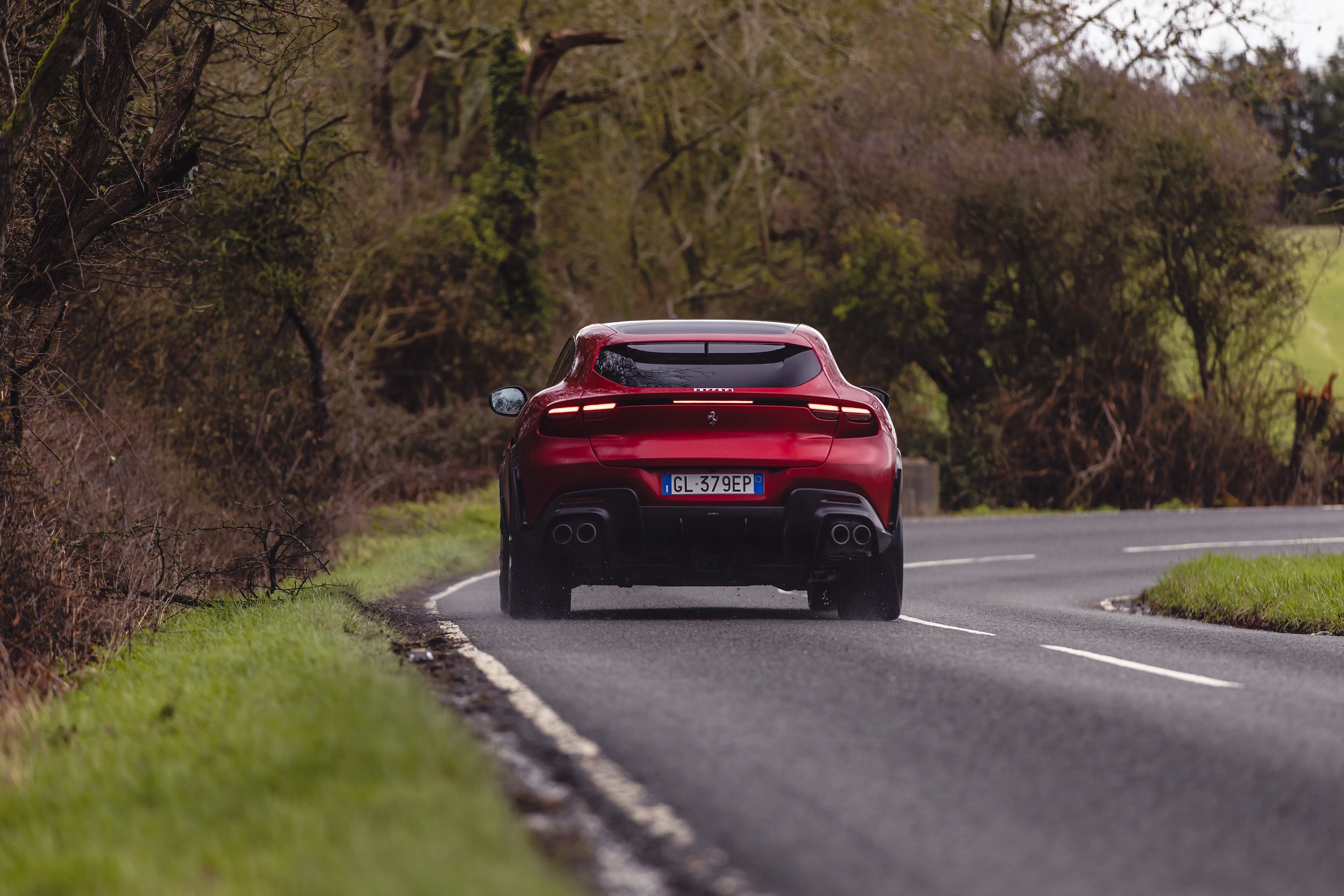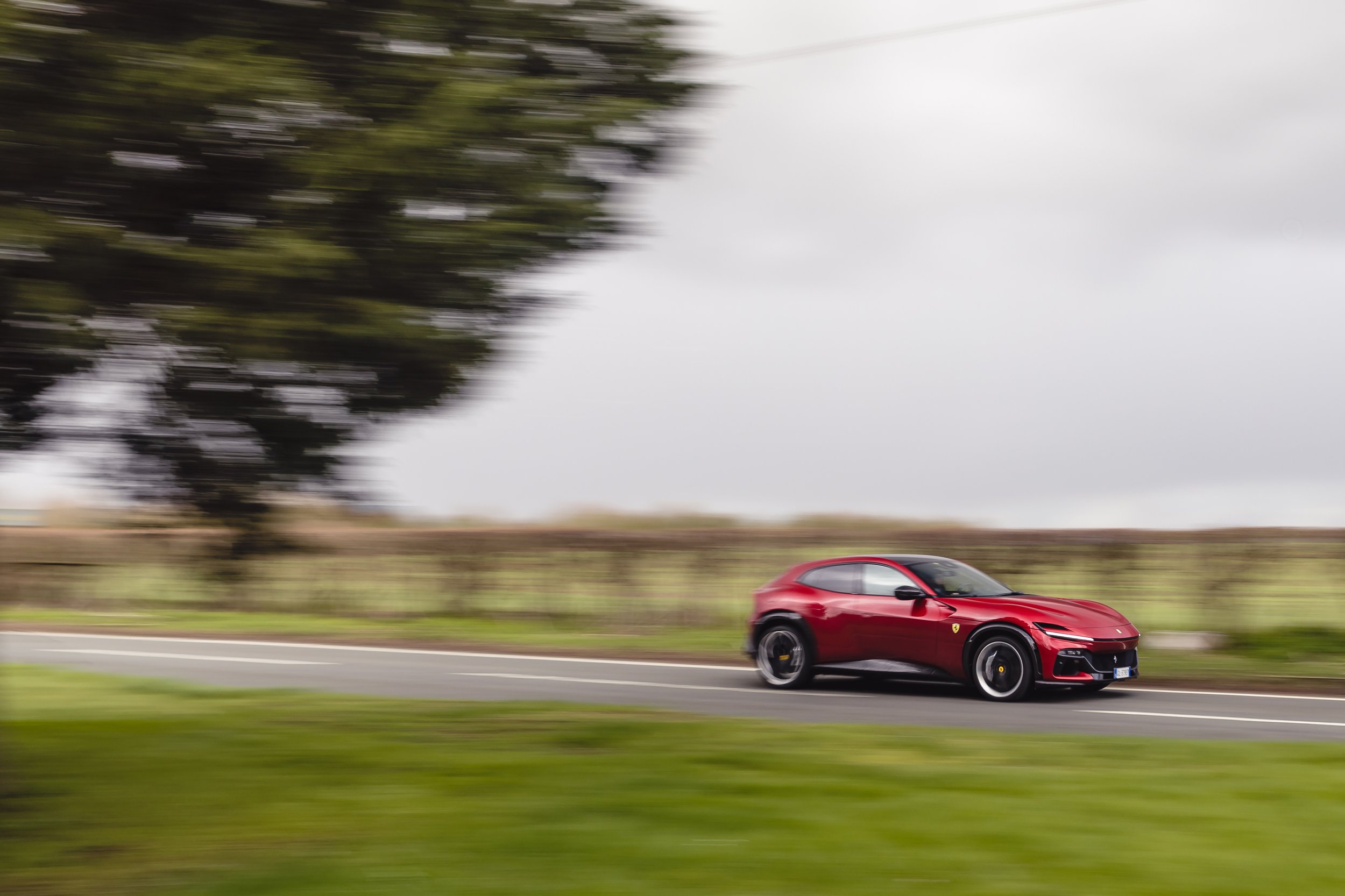
Road Test: Ferrari Purosangue
The latest V12 Ferrari isn’t a supercar or Grand Tourer, but a practical high-sided vehicle. Mark spends a weekend with the all-new Purosangue.
WORDS: Mark Rose | PHOTOS: Dom Ginn
Ferrari is absolutely adamant that the new Purosangue is not an SUV and so for the purpose of this review, I’m going to refer to it as an FUV (Ferrari Utility Vehicle). Interestingly, the Purosangue has appeared in group tests with other high sided vehicles such as the Aston Martin DBX707 and Bentley Bentayga, and it goes without saying that the Lamborghini Urus is considered a competitor, even if Maranello won’t say it officially. I’m fortunate in that I’ve driven all of the aforementioned cars in various guises, which makes me well qualified to judge what the Ferrari offers compared to its rivals that aren’t technically rivals. You get what I mean…
If the car’s messaging seems off, then take a step back and look at it for what it is. Yes, the proportions are tall relative to what you find in Ferrari’s supercars and Grand Tourers, but compared to an actual SUV, it’s still short and low slung. You climb in to a DBX or Bentayga, but in the Purosangue, you simply step in like you would a saloon car. The driving position is raised, but you don’t feel as though you’re looking down at surrounding vehicles, and when you pull alongside something genuinely large like a Range Rover you really see the difference between a proper SUV and the FUV. It also handles like a sports car, but more on that shortly. The point I’m making is that Ferrari’s insistence that the Purosangue is not an SUV isn’t necessarily grounded in its desire to deflect from the fact they’ve made a car that looks like one; they might actually be on to something.
But why the need to build it? The GTC4 Lusso came off sale a few years ago and despite its relative practicality compared to the other models in Ferrari’s range, it was never as spacious or usable as the SUVs that Lamborghini and Aston Martin have since released. What ever you think of these tall vehicles, Ferrari would have given sales away to the competition if it simply brought out a Lusso successor. That would have been bad for business and I don’t know about you, but I like to see Ferrari doing well.
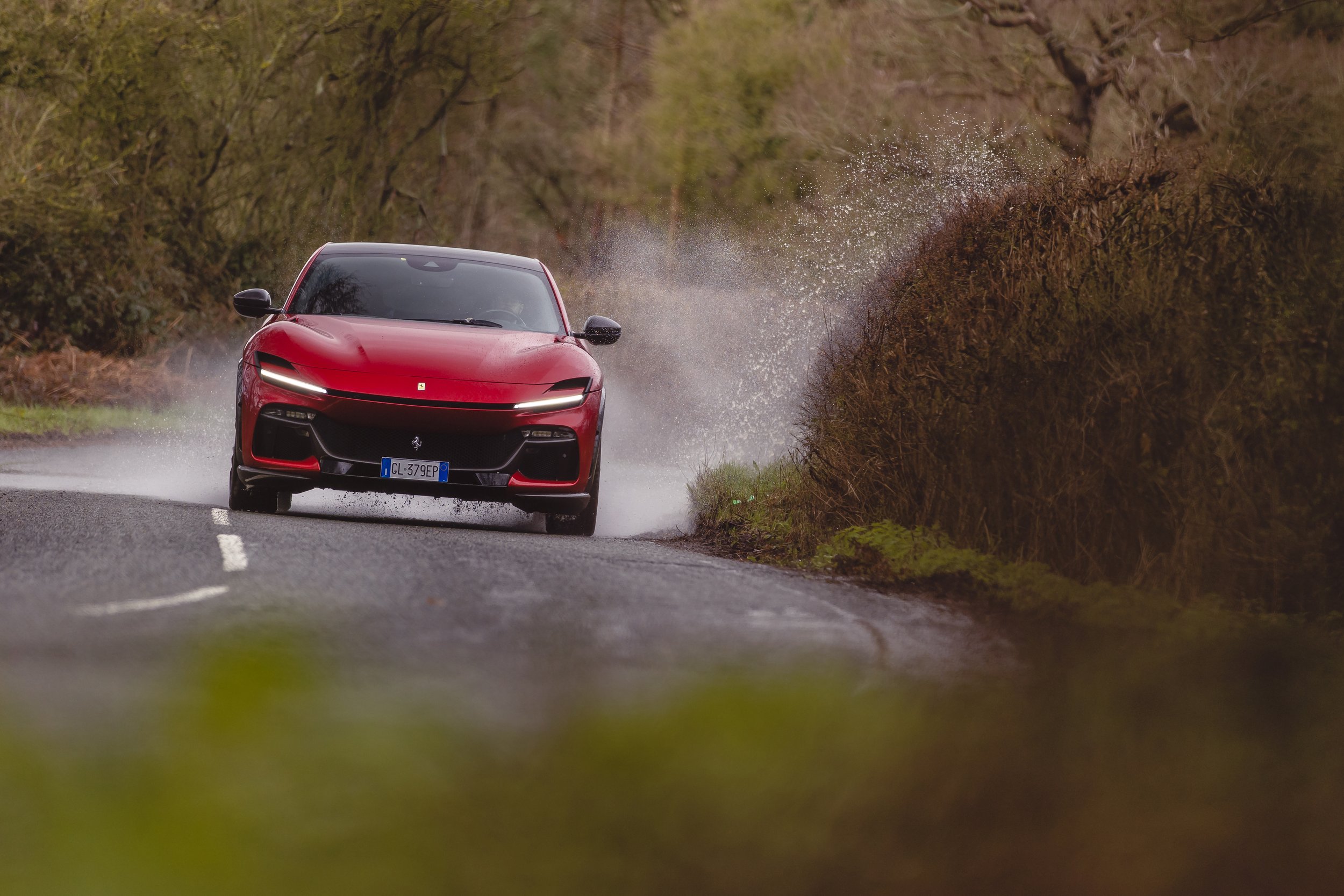
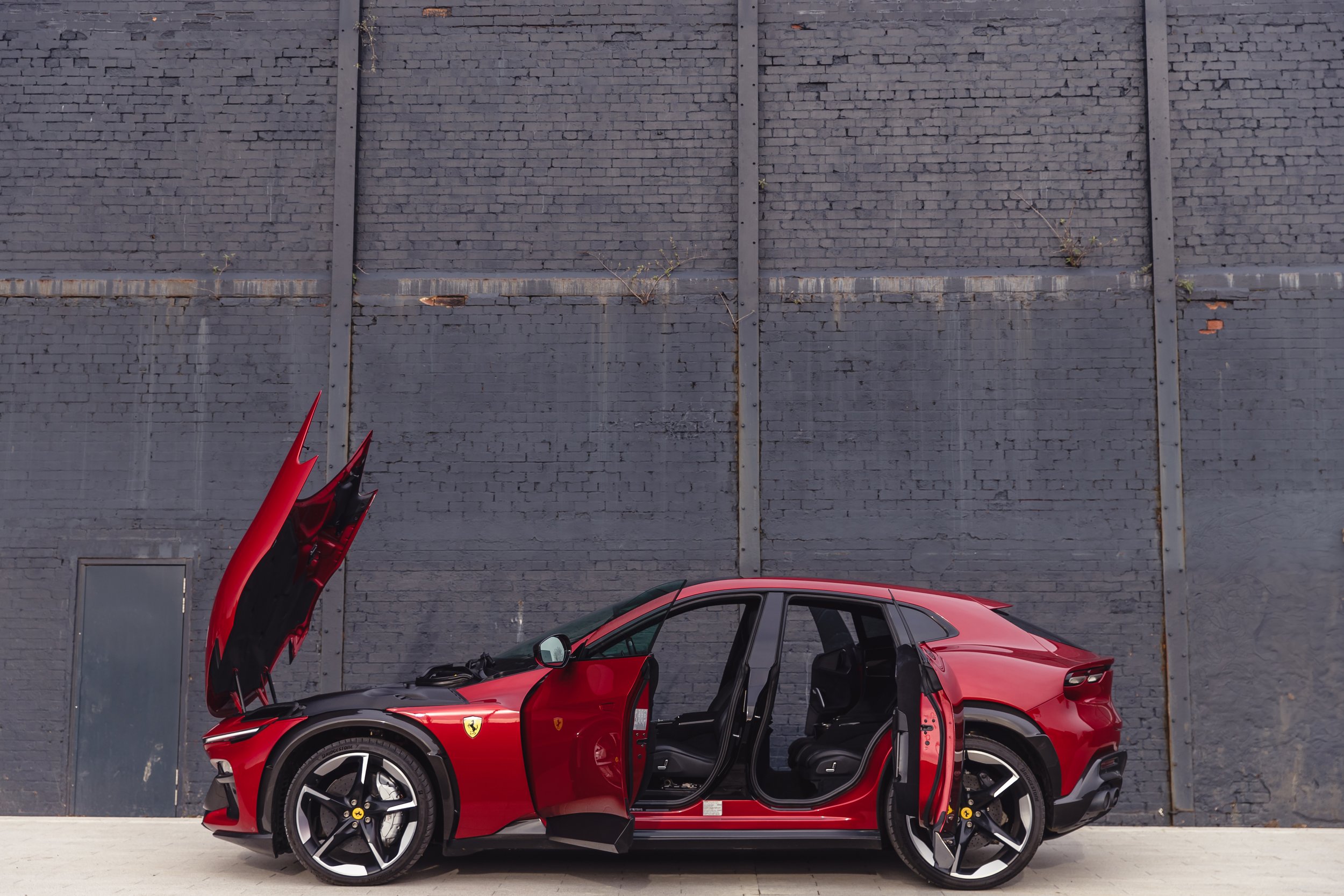
Speaking of the Lusso, that car was predominantly rear driven but it boasted a small power transfer unit that distributed some torque to the front wheels, but only when it was really needed. The Purosangue uses a similar system meaning this high-sided vehicle is rear-wheel drive in most situations, and like in the Lusso, the power that’s sent to those rear wheels originates from Ferrari’s naturally aspirated, 6.5 litre V12 engine. And what an engine. It’s the highlight of the car and the element that truly sets it apart from the Lambo, Aston and Bentley. It's a mountain of power and torque with 715bhp at 7,750rpm and 528lb ft. at 6,250rpm and offers up some serious, supercar bating performance. Despite a dry weight of 2,033kg, the car prances to 62mph in 3.3 seconds and will top out at just over 193mph. However, it’s the distribution of the performance that entertains, with a linear delivery and peak power available at the point at which the sound of the engine really begins to dominate. There is a majesty to the Ferrari V12 that is unmatched by anything else. It doesn’t shout about its intentions like the twelve cylinders in a Lamborghini, instead it sounds musical, like sitting in front of an orchestra in full song. And it’s a tune that you can play ‘till your heart’s content through, what is in my opinion, the best dual-clutch gearbox in the business. Pull one of the elaborate carbon paddles, and the eight-speed transmission snaps through gear changes quicker than you can blink, while serving up a symphony of revs in the process.
Happily, however, the Purosangue isn’t a one trick pony. It commands real dynamic prowess for a car so heavy with a relatively high centre of gravity, and it does so without anti-roll bars. This is where things get a little techy, but bear with me because what Ferrari has created is exceptionally clever and rather innovative. Each damper has an electric motor that drives gears which are connected to a ball screw. These apply force in to their respective damper shafts and help dial out pitch under braking and body roll when changing direction. Ferrari claims that the system is so effective, it could do away with the springs entirely and it would make no difference to the ride quality or body control. Instead, the springs are retained to serve only as a physical reference point for the system.
The results are levels of body control that should not be present in a car of such generous proportions. You rock up to a corner, turn the wheel and the Purosangue clings to the tarmac as if all the company profits depend on it. You can’t cheat physics, so of course there is some lateral movement, but it feels tighter than a DBX707 and an Urus Performante which are two cars that never felt lethargic in the first place. The Ferrari feels genuinely light on its feet, something that’s aided by the steering which lacks some feel, but is direct and only requires small inputs to get the car rotated in to corners. The ride quality is also sublime even though the car rides on huge 22 and 23-inch wheels which are wrapped in run-flat Bridgestone Potenza tyres. There are Soft, Medium and Hard damper settings, and even in its firmest set up, the Purosangue steamrolled over large bumps and never felt crashy over shoddy tarmac. Perhaps the DBX707 retains an advantage in terms of ride quality (I’d have to back-to-back them to provide a definitive answer), but the FUV certainly runs it close.
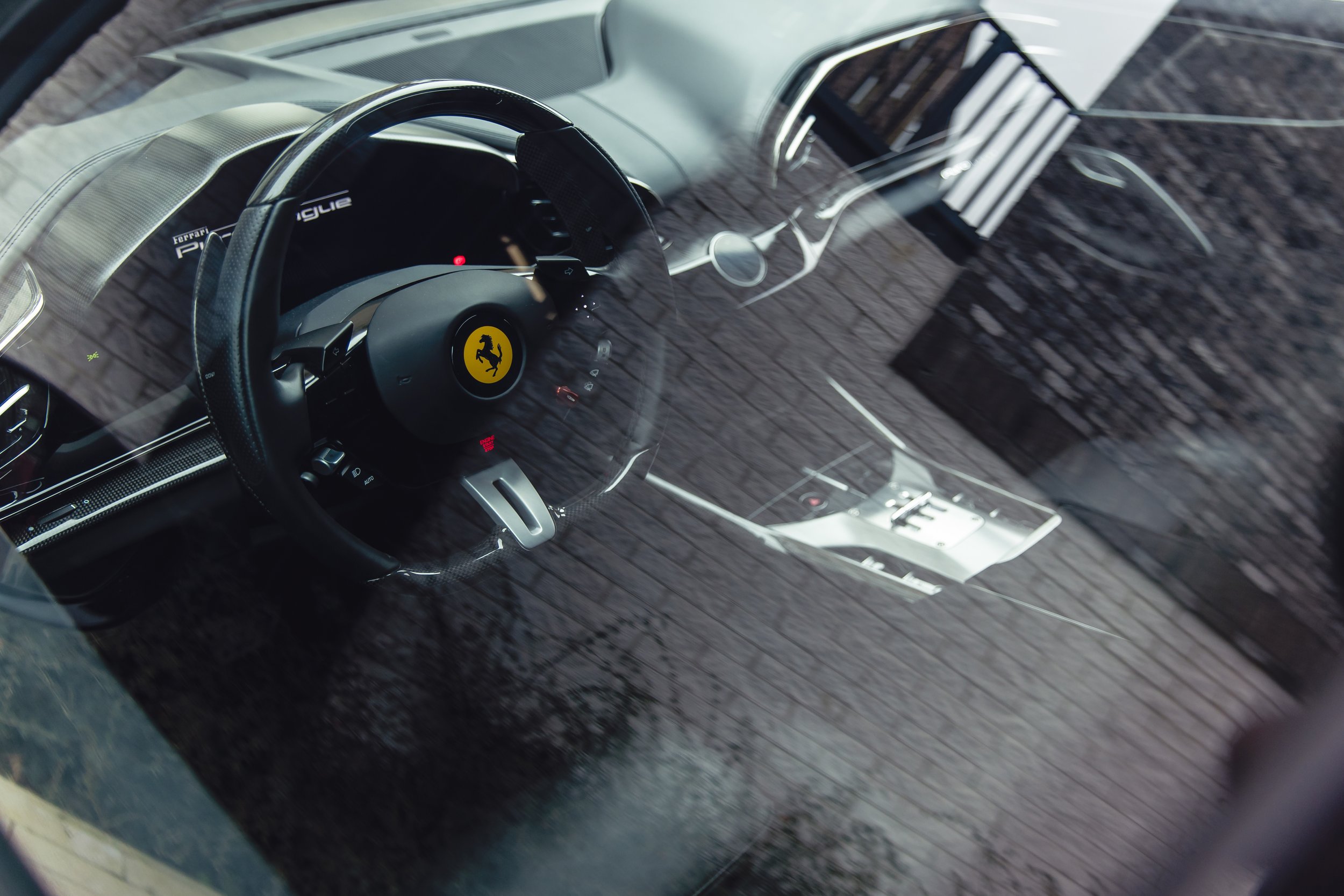
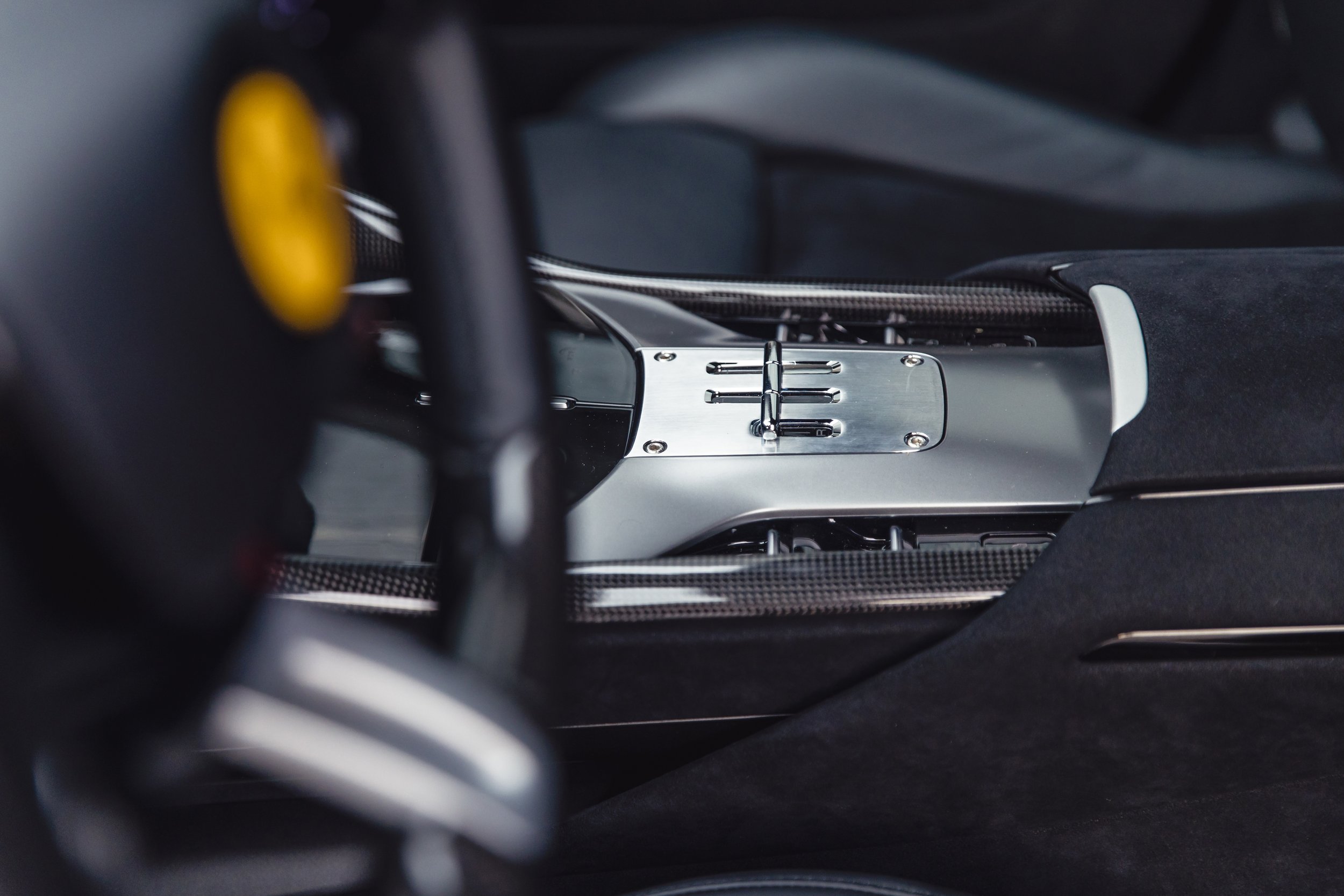
Pop the clamshell bonnet open to reveal the V12 and what you find is an engine that’s placed well before the front axle, to the point where it looks nestled up against the cabin. The front mid-engine layout helps keep the weight off the nose and thanks to a 49:51 front-to-rear weight distribution, the chassis feels nicely balanced. All of this adds to the Purosangue’s ability to bend physics and redefine what’s possible in a high sided vehicle. It’s deeply impressive.
That said, the car’s brief will fall down entirely if it’s a fantastic performance vehicle but is unable to do the daily grind, something I suspect the vast majority of owners will use it for. In this area, there isn’t much criticism to level, although what I will say is that it’s a very wide car. Perhaps the low roofline accentuates its perceived girth, but there’s no denying that on a tighter road it does dominate the lanes. I don’t like it when people hog two parking spaces because their car is a bit special, but if I ever see a Purosangue parked across the lines down the local supermarket, I will be giving the owner a free pass.
Width aside, there is a great daily driver to be had, here. Ferrari has maximised cabin space by making it a strict four seater with bucket seats for rear occupants. At 6ft2, our lead photographer Dom is a tall chap, but even he had sufficient leg and head room in the back of the Purosangue. The boot is also reasonably generous with 473 litres of space, and if you take out the rear parcel shelf and fold the seats down, there’s enough room for larger sports equipment like skis or golf clubs. The rear coach doors also improve ingress and egress while looking rather cool, and because they’re button operated, Ferrari has been able to get rid of the door handles which makes for a clean, coupe-like aesthetic.
In terms of practicality, it offers more than the Lusso did and while it lacks a little compared to rivals in this department, in reality it doesn’t need to be anymore usable. What really separates the Ferrari from the Aston, Lambo and to a lesser extent, the Bentley, is how unique the interior is. The aforementioned cars all upcycle parts from Mercedes-Benz and Audi, whereas the Ferrari interior is completely bespoke – it’s also worth mentioning that so is the vehicle platform, compared to the Urus and Bentayga which have a common ancestor.
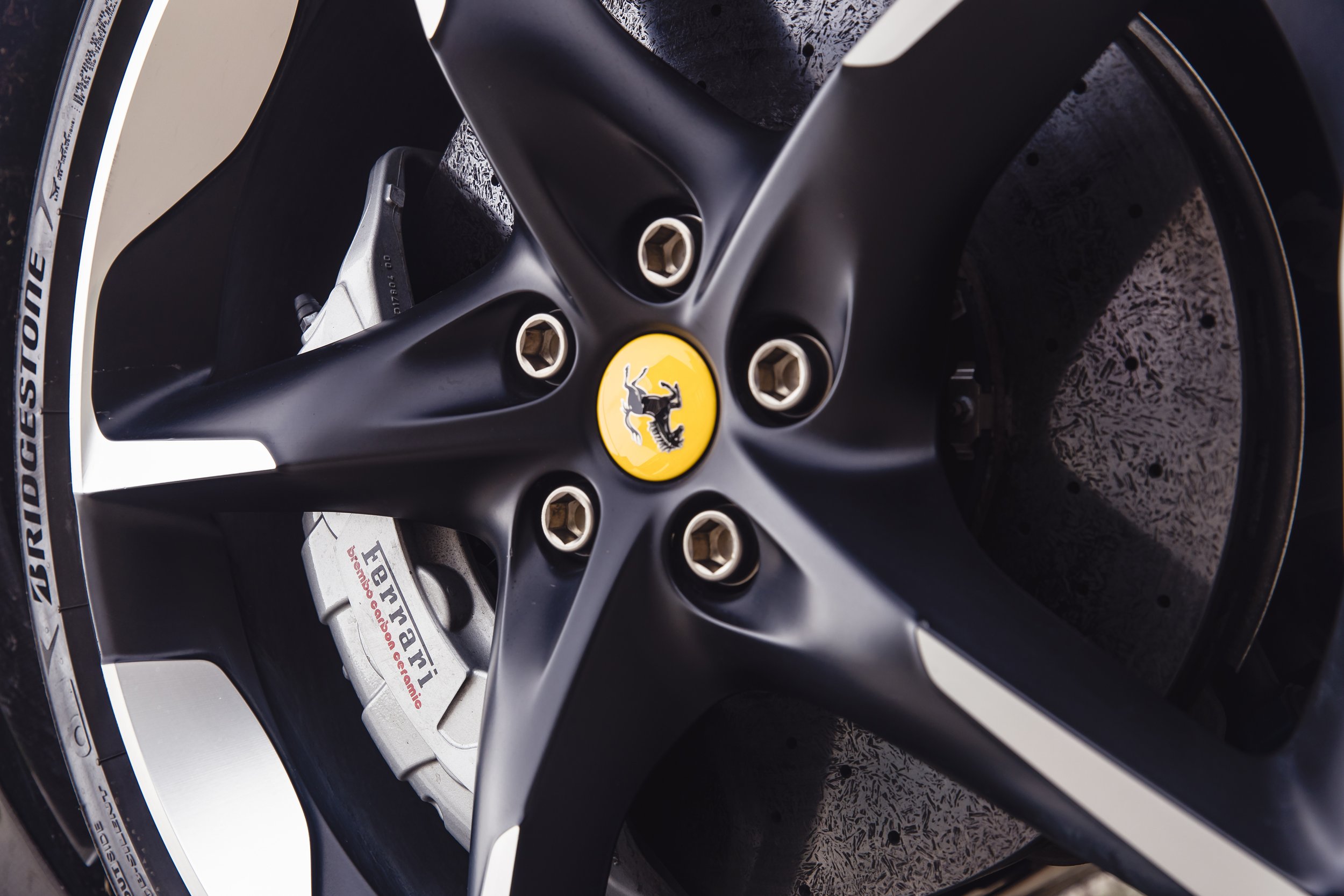
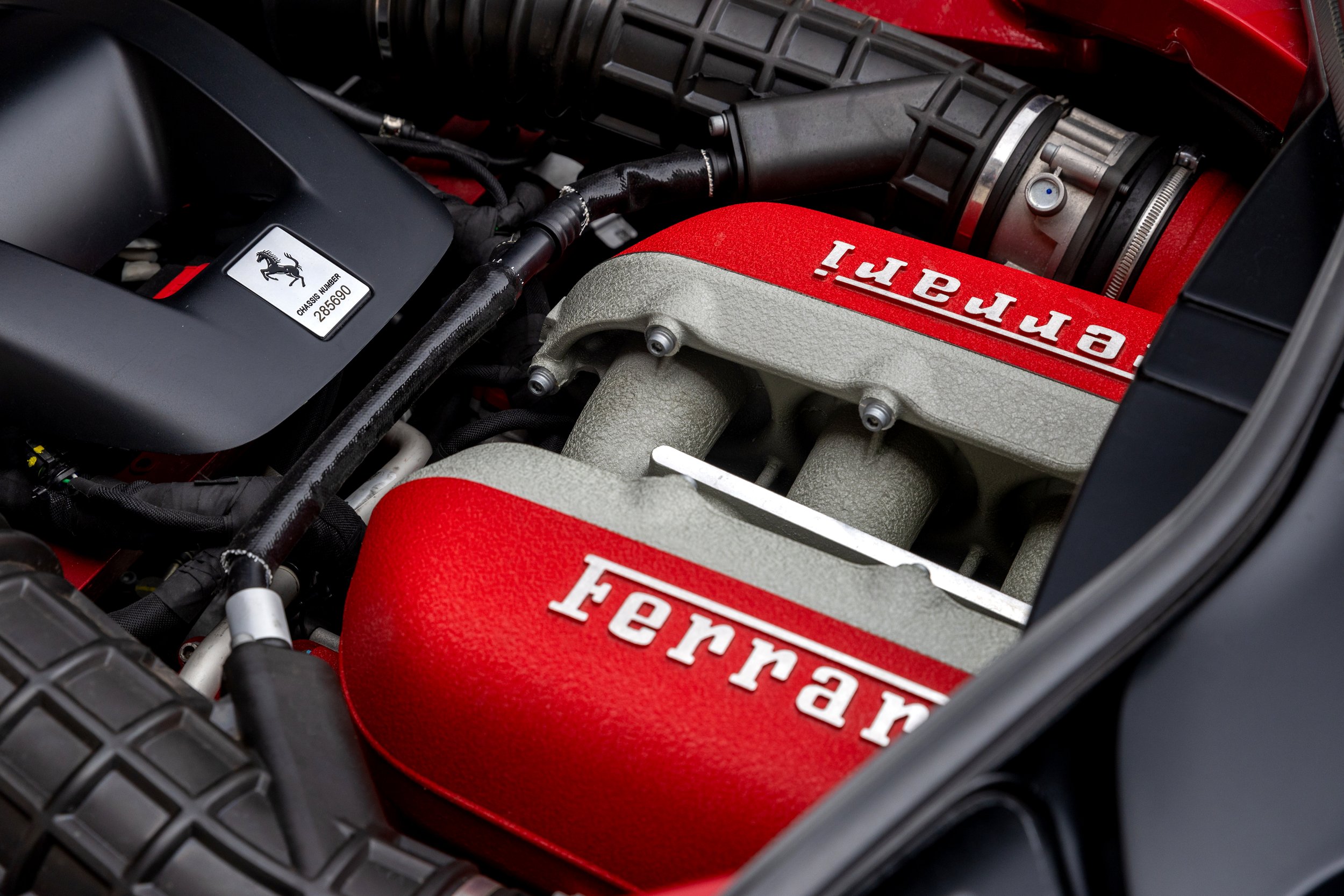
It doesn’t posses the same depth of quality or bling as a Bentayga, and in truth, the cabin in our test car was all black and therefore failed to highlight how far one can go in personalising their interior. However, the quality of the carbon trim and Alcantara is undeniable, as is the build quality, and at a cruise it done well to drown out unnecessary road and engine noise. You could make an argument for the interior being too minimalist, but I appreciate having one screen to look at while on the move, and connecting your phone via Apple CarPlay or Android Auto is a painless task. Fun fact, the Purosangue is the first modern Ferrari to not have a built in SatNav, and I’m here for it. Why go through the expense of developing an entire interface when you can connect a smartphone that does a superior job? Simplicity is a luxury that many people underestimate.
In this review I’ve spoken about some of the other cars you might consider over a Purosangue, although Ferrari is clear that they believe its high sided offering has no real rivals. The fact it has a V12 engine, is based on a bespoke platform, and handles better than any car in the SUV segment certainly separates it from nearly everything else in the market place – Rolls-Royce Cullinan notwithstanding. As such, Ferrari sees fit to offer the Purosangue at a very bespoke price of £313,000, or in the case of our press car, £411,000 including options. Now, I know you know that’s a lot of money, and I’m not here to convince you otherwise. However, unlike other manufacturers, Ferrari doesn’t need to sell the Purosangue by the boat load because it needs the cash to keep the company running. Financially, all is well in Maranello which means focus is solely on making the best cars possible for the most discerning of customers. This Ferrari Utility Vehicle is the ultimate, no compromise daily driver, and I suspect that many people reading this would have one if it were within their means. The Purosangue truly is in a class of one, as is the company that builds it.
Technical Specifications
Engine: V12, naturally aspirated
Displacement: 6,496cc
Power: 715bhp @ 7,750rpm
Torque: 528lb ft @6,250rpm
Transmission: 8-speed twin-clutch, AWD
0-62mph: 3.3 secs
VMAX: 193mph+
Weight: 2,033kg
Price: £313,000+
Ferrari’s claim that the Purosangue is not an an SUV holds water. It may have the proportions of one, but dynamically and in spirit, it’s anything but.
9/10
Verdict & Rating
“There is a majesty to the Ferrari V12 that is unmatched by anything else”
